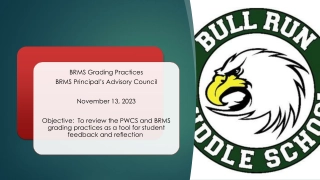
Understanding Management: Key Concepts and Importance for Organizational Success
Discover the essential concepts of management, such as planning, organizing, leading, and controlling, and learn how effective management practices contribute to organizational success. Explore the significance of employee engagement, strategic decision making, and customer satisfaction in achieving operational excellence. Enhance your understanding of management for improved productivity and efficiency.
Download Presentation

Please find below an Image/Link to download the presentation.
The content on the website is provided AS IS for your information and personal use only. It may not be sold, licensed, or shared on other websites without obtaining consent from the author. If you encounter any issues during the download, it is possible that the publisher has removed the file from their server.
You are allowed to download the files provided on this website for personal or commercial use, subject to the condition that they are used lawfully. All files are the property of their respective owners.
The content on the website is provided AS IS for your information and personal use only. It may not be sold, licensed, or shared on other websites without obtaining consent from the author.
E N D
Presentation Transcript
Understanding Management : Concept of Management, Management as Art and Science, Management vs Administration ArmaanSalikJ Assistant Professor, Jamal Institute of Management, Jamal Mohamed College.
Management can be defined as the process of coordinating and overseeing the activities of an organization to achieve its objectives efficiently and effectively through the utilization of resources. It involves planning, organizing, leading, and controlling the organization's (human, financial, material) specified goals. Definition of Management resources achieve to
OrganizationalSuccess Effective management is crucial for the success and sustainability of any organization, whether it's a business, non-profit, or government agency. It ensures that resources are utilized optimally to achieve desired outcomes andobjectives. Enhanced Productivity andEfficiency Good management practices lead to increased productivity and efficiency by streamlining processes, reducing waste, and improving resource allocation. It helps in achieving operational excellence and maintaining competitiveness inthe market. Strategic Decision Making Management provides frameworks and tools for strategic decision- making, including setting goals, evaluating alternatives, and allocating resources. It involves anticipating and adapting to changes in the external environmenttocapitalizeonopportunitiesandmitigaterisks. Importance of Understanding Management
EmployeeEngagementandDevelopment Effective management fosters a positive work environment that encouragesemployee engagement,motivation,anddevelopment. It involves leadership, communication, and fostering a culture of collaborationandinnovationwithintheorganization. CustomerSatisfaction andStakeholderValue Management plays a critical role in understanding customer needs and expectations and aligning organizational strategies to deliver value. It focuses on building strong relationships with stakeholders and maintainingapositivereputationinthecommunity andindustry. Importance of Understanding Management
Process Orientation Planning: Setting goals, defining strategies, and developing plans to coordinate activities. Organizing: Structuring resources and activities to achieve objectives effectively. Leading: Motivating and directing employees towards accomplishing organizational goals. Controlling: Monitoring activities to ensure they are being accomplished as planned and taking corrective action when necessary. Concept of Management
Planning Setting Objectives: Establishing clear and achievable goals for the organization. Strategic Planning: Long-term planning that defines the organization's mission and vision. Operational Planning: Short-term planning that outlines specific actions and tasks. Organizing Resource Allocation: Assigning tasks, roles, and responsibilities to individuals or teams. Structural Design: Creating an organizational structure that facilitates communication, coordination, and workflow. Establishing Authority and Responsibility: Defining who is accountable for what within the organization. Key Functions of Management
Leading Motivating Employees: Inspiring and encouraging employees to perform at their best. Effective Communication: Transmitting information, ideas, and directives throughout the organization. Conflict Resolution: Handling disputes and disagreements among employees or teams. Controlling Performance Monitoring: Evaluating progress towards goals and objectives. Measurement and Feedback: Collecting data to assess performance and providing feedback for improvement. Adjustment and Correction: Taking corrective actions to ensure deviations from plans are minimized or eliminated. Key Functions of Management
Achievement of Organizational Goals Management ensures that all efforts are directed towards achieving the objectives set by the organization. Efficient Use of Resources Proper management leads to optimal utilization of resources such as human resources, finances, and materials. Enhanced Productivity and Innovation Effective management practices foster a productive work environment and encourage innovation and creativity among employees. Additional Considerations Management Styles Different managers may employ various management styles (e.g., autocratic, democratic, laissez-faire) based on organizational culture and circumstances. Importance of Management Adaptation to Change Management must adapt to external changes (e.g., technological advancements, market shifts) to maintain competitiveness and sustainability. Global Perspective Management principles apply universally but may require adaptation to cultural, economic, and political differences in global operations.
Personal Skills Intuition and Creativity: Managers often rely on intuition and creative thinking to solve complex problems and make decisions that may not have clear-cut solutions based solely on data. Experience: Seasoned managers draw from their past experiences and knowledge to navigate uncertain situations and guide their teams effectively. Flexibility: Art in management allows for flexibility in approach, accommodating varying circumstances and individual styles of leadership. Management as an Art Characteristics of Art in Management Practice and Continuous Improvement Learning from Experience: Managers refine their skills through practical experience and learn from both successes and failures. Adaptation: Continuous improvement involves adapting management styles and techniques to changing business environments and emerging challenges. Innovation: Artistic management encourages innovation and the exploration of new ideas to improve processes and achieve organizational goals creatively.
Individual Approach Unique Management Styles: Each manager brings a unique set of skills, perspectives, and personality traits to their role, influencing how they approach decision-making and leadership. Characteristics of Art in Management Tailored Solutions: Art in management allows managers to tailor their strategies and tactics based on the specific needs and dynamics of their teams and organizational contexts. Empowerment: Effective artistry in management empowers managers to inspire, motivate, and engage their teams by leveraging their individual strengths and leadership qualities.
Leadership Styles Transformational Leadership: Inspiring and motivating teams through a compelling vision and personal charisma. Servant Leadership: Focusing on the growth and well-being of team members to foster a supportive and productive work environment. Laissez-Faire Leadership: Allowing teams significant autonomy and decision-making authority to encourage innovation and creativity. Examples of Management as Art Decision-Making Techniques Intuitive Decision Making: Trusting gut instincts and personal judgment when faced with ambiguous or rapidly changing situations. Creative Problem-Solving: Using lateral thinking and brainstorming to generate innovative solutions to complex challenges. Adaptive Leadership: Adjusting management approaches dynamically to address unique organizational needs and external pressures.
Systematic Knowledge Management as a science relies on established principles, theories, and methodologies derived from research and empirical evidence. It emphasizes the systematic approach to problem-solving and decision- making, where decisions are based on data, analysis, and logical reasoning. Analytical Approach Utilizes quantitative and qualitative techniques to analyze data and information. Techniques such as statistical analysis, financial modeling, and operations research are employed to make informed decisions and predictions. This approach helps in identifying patterns, trends, and correlations within data, aiding in strategic planning and resource allocation. Management as a Science Characteristics of Science in Management
Predictability Aims to achieve consistent and predictable outcomes by following structured processes and methodologies. Characteristics of Science in Management By applying scientific principles, management seeks to minimize uncertainties and risks, thereby improving the efficiency and effectiveness of organizational operations.
Use of Quantitative Techniques Financial Analysis:Utilizing ratios, trends, and forecasts to assess financial health and make investment decisions. Operations Management:Applying mathematical models for inventory management, production scheduling, and supply chain optimization. Market Research:Conducting surveys, focus groups, and data analysis to understand consumer behavior and market trends. Evidence-Based Management Practices Performance Metrics:Using Key Performance Indicators (KPIs) to measure progress and performance against organizational goals. Benchmarking:Comparing organizational performance with industry standards to identify areas for improvement. Quality Management:Implementing Six Sigma, Total Quality Management (TQM), or Lean principles to enhance process efficiency and customer satisfaction. Examples of Management as Science
Objectivity By relying on data and evidence, management as a science promotes objectivity in decision-making, reducing biases and subjective judgments. Efficiency and Effectiveness Structured approaches and efficiency of operations and the effectiveness of strategic initiatives. Continuous Improvement Scientific methods encourage adaptation based on feedback and results, fostering innovation and organizational agility. Advantages of Management as Science methodologies improve the continuous learning and
Complexity of Human Behavior Human behavior and interactions often defy precise quantification and prediction, posing challenges in applying purely scientific approaches to management. Dynamic Business Environment Rapid changes in technology, markets, and regulations require management to adapt quickly, sometimes necessitating flexibility beyond traditional scientific methods. Challenges and Limitations
Combining Artistic and Scientific Elements Artistic Elements in Management: o Creativity and Innovation: Managers often rely on creativity to solve problems, inspire teams, and drive innovation within the organization. o Leadership Styles: Different managers may adopt unique leadership styles that involve intuition, empathy, and personal insight to motivate and guide their teams. o Decision-Making:Artistic decision-making involves judgment, intuition, and experience rather than purely data-driven or logical processes. Scientific Elements in Management: o Systematic Approaches: Management utilizes systematic approaches based on theories, models, and frameworks to analyze data, make predictions, and optimize processes. o Quantitative Analysis:Tools like statistical analysis, financial modeling, and operations research provide managers with insights into performance, efficiency, and strategic decision-making. o Evidence-Based Practices: Management often relies on empirical evidence and research findings to validate strategies and improve outcomes. Management: Art and Science Interrelationship
Strategic Planning: Artistic Aspect:Visionary leadership involves setting a compelling vision and aligning stakeholders toward a common goal. Scientific Aspect:Strategic planning uses data analysis and market research to identify opportunities, threats, and competitive advantages. Examples Organizational Change: Artistic Aspect:Change management requires empathy, communication skills, and the ability to inspire and motivate employees during transitions. Scientific Aspect:Change initiatives are guided by structured methodologies, metrics, and feedback loops to monitor progress and adapt strategies.
Definition of Administration Administrationinvolves setting up objectives and crucial policies of an organization. It is the high-level function that focuses on establishing the organization s overall direction and long-term goals. Differences Between Management and Administration Management vs Administration Focus Management: Primarily concerned with executing the plans and policies set by the administration. It focuses on managing the day-to- day operations and activities to ensure the organization runs smoothly and efficiently. Examples: Overseeing projects, supervising employees, implementing strategies. Administration: Involves formulating high-level objectives, strategies, and policies. It is about defining the vision, mission, and long-term goals of the organization. Examples: Strategic planning, policy development, setting corporate objectives.
Hierarchy Management: Operates at the middle and lower levels of the organization. Managers are responsible for implementing the policies and plans laid out by the administrators. Examples: Department heads, team leaders, supervisors. Administration: Functions at the top level of the organizational hierarchy. Administrators are the key decision-makers who shape the overall direction of the organization. Examples: Board of directors, CEOs, company executives. Management vs Administration Scope Management: Concerned with the internal environment of the organization. It focuses on managing resources, including human resources, financial resources, and physical assets, to achieve operational efficiency. Examples: Resource allocation, process optimization, performance management. Administration: Focuses on the external environment and overall strategic planning. It deals with setting long-term goals and ensuring that the organization adapts to changes in the external environment. Examples: Market analysis, regulatory compliance, strategic partnerships.
Key Differences in Roles and Responsibilities Decision-Making Management: Makes tactical decisions that impact the day-to-day functioning of the organization. These decisions are often more immediate and operational. Examples: Scheduling work shifts, resolving conflicts, implementing marketing campaigns. Administration: Makes strategic decisions that have a long-term impact on the organization s direction. These decisions are broader and more fundamental. Examples: Deciding to enter a new market, mergers and acquisitions, changing organizational structure. Orientation Management: More people-oriented, focusing on leading teams, managing interpersonal relationships, and ensuring employee performance. Examples: Coaching employees, performance appraisals, team building. Administration: More policy-oriented, focusing on creating policies, setting standards, and ensuring compliance with regulations and organizational goals. Examples: Developing corporate policies, setting ethical guidelines, compliance management. Management vs Administration Examples Managers Roles: Supervisors, department heads, team leaders. Tasks: Overseeing projects, managing teams, ensuring operational efficiency. Administrators Roles: Board of directors, company executives, government officials. Tasks: Strategic planning, policy development, organizational oversight
1. Top-Level Management Levels of Management 2. Middle-Level Management 3. Lower-Level Management
Role and Responsibilities: Strategic Planning: Define the long-term vision and goals of the organization. Example: Setting a goal to expand the business into international markets over the next five years. Decision Making: Make high-impact decisions regarding the overall direction of the company. Example: Deciding to merge with another company or acquire a competitor. Policy Formulation: Establish organizational policies and guidelines. Example: Creating policies on corporate social responsibility and ethical business practices. Examples: CEOs, Presidents, Vice Presidents, Board of Directors. Top-Level Management Skills Required: Strategic thinking to foresee future opportunities and challenges. Leadership and vision to inspire and guide the organization. Strong communication skills to articulate the company's vision and strategies. Extensive industry knowledge to make informed decisions.
Role and Responsibilities: Implementing Policies:Translate top-level management's strategies into actionable plans. Example: Developing a marketing campaign based on the company's new strategic direction. Coordination:Coordinate activities between different departments or units. Example: Ensuring the marketing and sales departments collaborate effectively to achieve sales targets. Resource Allocation:Allocate resources efficiently to meet departmental goals. Example: Budgeting and allocating funds for departmental projects and initiatives. Examples:Department Heads, Division Managers, Regional Managers. Skills Required: Problem-solving and decision-making to address departmental challenges. Interpersonal skills to manage relationships with peers, subordinates, and superiors. Performance management to ensure team members meet their objectives. Ability to bridge the gap between top and lower management, ensuring smooth communication and implementation of strategies. Middle-Level Management
Role and Responsibilities: Supervision:Oversee the day-to-day operations and activities of employees. Example: Monitoring the performance of a sales team to ensure they meet daily sales targets. Employee Guidance:Provide guidance, training, and support to staff. Example: Conducting training sessions for new employees to familiarize them with company procedures. Performance Monitoring:Ensure tasks are completed efficiently and effectively. Example: Regularly checking the quality of work produced by team members and providing feedback. Examples:Supervisors, Team Leaders, Foremen. Skills Required: Strong communication skills to convey instructions and feedback clearly. Leadership and motivational skills to inspire employees and maintain high morale. Time management to ensure tasks and projects are completed on schedule. Operational expertise to understand the specific tasks and processes of the team. Lower-Level Management
Definition of a Profession: A profession is a vocation founded upon specialized educational training, the purpose of which is to supply objective counsel and service to others, for a direct and definite compensation, wholly apart from expectation of other business gain. Characteristics of Management as a Profession: Specialized Knowledge: Managers require extensive knowledge and skills in areas such as finance, marketing, operations, and human resources. This knowledge is often obtained through formal education, such as business degrees (BBA, MBA). Management as a Profession Formal Education and Training: Many managers undergo formal education and training programs to acquire the necessary skills. Institutions offer degrees and certifications in management. Continuous professional development through workshops, seminars, and courses is common. Ethical Standards: Management as a profession adheres to a code of ethics to ensure integrity and fairness. Professional organizations, such as the American Management Association (AMA), provide guidelines and ethical standards. Ethical behavior in management fosters trust and credibility within and outside the organization.
Professional Associations: There are various professional bodies and associations that support managers, such as the AMA, Chartered Management Institute (CMI), and the Project Management Institute (PMI). These organizations offer certifications, resources, networking opportunities, and advocacy for the management profession. Accountability and Responsibility: Managers are accountable for their decisions and actions. They have a responsibility towards their employees, stakeholders, and the broader community. Effective management contributes to the economic and social well-being of society. Autonomy: Managers have the autonomy to make decisions within their areas of responsibility. They are expected to exercise judgment and discretion in their roles. Management as a Profession
Managers need a diverse set of skills to effectively lead their teams and organizations. These skills can be broadly categorized into technical skills, human skills, conceptual skills, and decision-making skills. Technical Skills: The ability to perform specific tasks related to a particular field. Importance: Essential for understanding the work being done by the team. Helps managers solve technical problems and guide their teams effectively. Management Skills Examples: An IT manager having expertise in programming and system analysis. A finance manager being proficient in financial analysis and budgeting. A marketing manager having skills in market research and digital marketing.
Human Skills: The ability to work with, understand, and motivate other people, both individually and in groups. Importance: Crucial for building and maintaining effective interpersonal relationships. Facilitates teamwork and collaboration. Management Skills Examples: Effective communication: Clearly conveying information and listening to feedback. Team-building: Creating a cohesive and motivated team. Conflict resolution: Managing and resolving conflicts constructively.
Conceptual Skills: The ability to think abstractly, analyze complex situations, and see the big picture. Importance: Enables managers to understand how different functions of the organization interrelate. Helps in strategic planning and problem-solving at a high level. Management Skills Examples: Vision: Understanding and articulating the long-term goals of the organization. Innovation: Thinking creatively to develop new ideas and solutions. Strategic planning: Formulating and implementing effective strategies to achieve organizational objectives.
Decision-Making Skills: The ability to make sound decisions based on analysis and judgment. Importance: Critical for choosing the best course of action in various situations. Impacts the efficiency and success of the organization. Examples: Problem identification: Recognizing and defining problems accurately. Analysis: Gathering and analyzing relevant information to understand the problem. Evaluation: Weighing alternatives and considering potential outcomes. Decision: Making a choice and taking action. Implementation: Executing the decision and ensuring it is followed through. Monitoring: Reviewing the decision and making adjustments as needed. Management Skills
Importance of Technical Expertise in Management: Technical skills are crucial for managers to understand the specifics of the tasks and processes within their area of responsibility. Technical Skills These skills enable managers to provide guidance, support, and effective supervision to their team members. Technical expertise helps in troubleshooting issues, optimizing processes, and ensuring quality and efficiency.
Information Technology (IT): Programming: Knowledge of programming languages such as Python, Java, C++, etc. Ability to write, debug, and maintain code. System Analysis: Understanding system architecture and design. Ability to analyze system requirements and workflows. Finance: Examples of Technical Skills in Different Fields: Financial Analysis: Ability to interpret financial statements and reports. Skills in financial modeling and forecasting. Budgeting: Knowledge of budgeting processes and techniques. Ability to develop, manage, and control budgets.
Marketing: Market Research: Skills in collecting, analyzing, and interpreting data about markets, products, and consumers. Ability to conduct surveys, focus groups, and competitive analysis. Digital Marketing: Knowledge of online marketing strategies and tools such as SEO, SEM, and social media marketing. Ability to analyze digital marketing metrics and adjust campaigns accordingly. Examples of Technical Skills in Different Fields: Additional Examples of Technical Skills: Operations Management: Supply Chain Management: Understanding of logistics, procurement, and inventory management. Ability to optimize supply chain processes for efficiency. Process Improvement: Skills in methodologies such as Six Sigma, Lean, and Total Quality Management (TQM). Ability to identify and implement process improvements.
Human Resources (HR): Talent Acquisition: Knowledge of recruitment strategies and techniques. Ability to conduct interviews, assess candidates, and manage the hiring process. Performance Management: Skills in designing and implementing performance appraisal systems. Ability to provide feedback, coaching, and development plans. Examples of Technical Skills in Different Fields: Benefits of Technical Skills for Managers: Enhances the manager s credibility and respect among team members. Facilitates better decision-making based on a deep understanding of technical aspects. Improves the ability to mentor and train employees effectively. Contributes to the overall efficiency and effectiveness of the department or organization.
Importance of Human Skills in Management: Human skills, also known as interpersonal or soft skills, are essential for effective management. They involve the ability to interact, communicate, motivate, and lead others. Key Human Skills for Managers: Communication: The ability to convey information clearly and effectively to others. Importance: Facilitates understanding of goals, tasks, and expectations. Builds strong relationships and fosters teamwork. Examples: Verbal communication: Meetings, presentations, one-on-one discussions. Written communication: Emails, reports, memos. Human Skills
Motivation: The ability to inspire and energize individuals or teams to achieve organizational goals. Importance: Boosts morale and engagement. Encourages initiative and productivity. Human Skills Examples: Providing recognition and rewards. Setting challenging yet attainable goals. Offering opportunities for professional growth.
Conflict Resolution: The ability to address and resolve disagreements or disputes constructively. Importance: Prevents escalation of conflicts that can disrupt teamwork and productivity. Promotes a positive work environment. Human Skills Examples: Active listening to understand different perspectives. Negotiating mutually beneficial solutions. Mediating disputes impartially.
Empathy: The ability to understand and share the feelings of others. Importance: Builds trust and rapport with team members. Enhances communication and collaboration. Human Skills Examples: Showing sensitivity to personal and professional challenges. Offering support during difficult times. Considering the impact of decisions on others.
Leadership: The ability to influence and guide others toward achieving common goals. Importance: Inspires commitment and dedication. Guides teams through change and challenges. Human Skills Examples: Providing vision and direction. Delegating tasks effectively. Coaching and mentoring team members.
Importance of Conceptual Skills in Management: Conceptual skills are crucial for managers as they involve the ability to think strategically, understand complex situations, and make informed decisions that align with organizational goals. Key Aspects of Conceptual Skills: Vision: The ability to envision the future direction of the organization. Importance:Helps managers set long-term goals and create a sense of purpose and direction for their teams. Example:A visionary manager in technology might foresee the shift towards artificial intelligence and strategize on how to integrate it into their company's products. Conceptual Skills Innovation: The ability to think creatively and develop new ideas or solutions. Importance:Encourages continuous improvement and adaptation to changing market conditions. Example:An innovative manager in marketing might introduce a new digital marketing campaign that leverages emerging social media trends.
Strategic Planning: Developing and implementing plans that align with organizational objectives. Importance: Ensures that resources are used efficiently to achieve desired outcomes. Example:A manager in operations might create a strategic plan to streamline production processes and reduce manufacturing costs. Problem-Solving: Analyzing complex situations and identifying effective solutions. Importance: Enables managers to address challenges proactively and minimize risks. Example:A problem-solving manager in finance might analyze financial data to identify cost-saving opportunities or investment strategies. Conceptual Skills
Developing Conceptual Skills: Education and Training: Pursuing advanced education in business administration, economics, or related fields. Attending workshops, seminars, and conferences on strategic thinking and leadership. Experience: Gaining diverse work experience in different departments or industries. Taking on roles that involve strategic decision-making and planning. Conceptual Skills Networking: Connecting with industry leaders and mentors who can provide guidance on strategic issues. Joining professional associations that focus on strategic management and leadership.
Integrity: Adherence to moral and ethical principles in decision-making and behavior. Importance: Builds trust and credibility with employees and stakeholders. Establishes a foundation for ethical behavior throughout the organization. Example:Demonstrating honesty and transparency in communication and actions. Empathy: Understanding and sharing the feelings of others, including employees and colleagues. Qualities of Managers Importance: Enhances communication and interpersonal relationships. Fosters a supportive work environment where employees feel valued and understood. Example:Actively listening to employees' concerns and providing empathetic support. Resilience: Ability to bounce back from setbacks and maintain a positive attitude under pressure. Importance: Inspires confidence and optimism among team members during challenging times. Demonstrates leadership through perseverance and determination. Example:Handling organizational changes or crises with composure and resilience.
Vision: Having a clear direction and purpose for the future of the organization. Importance: Guides strategic decision-making and goal-setting. Motivates and inspires employees by communicating a compelling vision. Example:Setting ambitious yet achievable goals that align with the organization's mission. Courage: Willingness to take risks and make tough decisions when necessary. Importance: Enables managers to seize opportunities for innovation and growth. Promotes a culture of proactive problem-solving and initiative. Qualities of Managers Example:Making unpopular decisions for the long-term benefit of the organization. Accountability: Taking responsibility for one's actions and decisions, as well as holding others accountable. Importance: Cultivates a culture of trust and responsibility within the team. Ensures transparency and fairness in decision-making processes. Example:Accepting both success and failure, and learning from mistakes to improve future outcomes.
Communication Skills: Ability to convey information clearly and effectively to diverse audiences. Importance: Facilitates understanding and alignment among team members. Supports efficient decision-making and problem-solving processes. Example:Using active listening, clarity, and empathy in all forms of communication. Adaptability: Flexibility and openness to change in response to evolving circumstances. Importance: Enables managers to navigate uncertainty and capitalize on new opportunities. Promotes innovation and continuous improvement within the organization. Qualities of Managers Example:Adapting management strategies to suit different team dynamics or market conditions.
Effective managers possess a range of characteristics that contribute to their success in leading teams and achieving organizational goals. Adaptability: Ability to adjust to new conditions or changes in the work environment. Importance: Enables managers to respond effectively to unexpected challenges and evolving situations. Example:Adapting strategies in response to market shifts or technological advancements. Characteristics of Effective Managers Decisiveness: Ability to make timely and effective decisions, even in uncertain or high-pressure situations. Importance: Ensures progress and momentum in achieving goals, preventing delays or indecision. Example: Deciding on project priorities or resolving conflicts swiftly.
Accountability: Taking responsibility for one's actions and decisions, and being answerable for the outcomes. Importance: Builds trust and reliability within the team and with stakeholders, fostering a culture of responsibility. Example: Acknowledging mistakes and taking corrective actions transparently. Characteristics of Effective Managers Collaboration: Working effectively with others, both within and outside the team, to achieve common goals. Importance: Promotes synergy and collective achievement, leveraging diverse perspectives and skills. Example: Leading cross-functional teams to develop integrated solutions.
Vision: Having a clear sense of purpose and direction for the team or organization. Importance: Inspires and motivates others by articulating a compelling vision for the future. Example: Setting ambitious yet achievable goals that align with the organization's mission Characteristics of Effective Managers Resilience: Ability to bounce back from setbacks or challenges, maintaining effectiveness under pressure. Importance: Sustains motivation and performance during difficult times, guiding the team through adversity. Example: Remaining optimistic and focused during periods of organizational change or economic downturns.
Leadership: Guiding and motivating others towards achieving common goals, fostering a positive work environment. Importance: Influences team morale, productivity, and overall organizational culture. Example: Providing mentorship and developmental opportunities for team members. Characteristics of Effective Managers Communication Skills: Ability to convey information clearly and effectively, both verbally and in writing. Importance: Facilitates understanding, alignment, and collaboration among team members and stakeholders. Example: Conducting productive team meetings or delivering persuasive presentations.






















